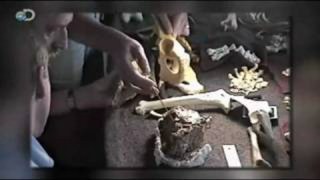The discovery of Ardi, the 4.4 million-year-old female partial skeleton, was a monumental moment in human history. After 17 years of sustained intensive investigation in the Ethiopian desert, scientists finally published their findings about this groundbreaking landmark in the journal Science. This new chapter on human evolution opens up a window into our ancestry and reveals the first evolutionary steps our ancestors took after diverging from a common ancestor shared with living chimpanzees.
Ardi is now the oldest known skeleton from our branch of the primate family tree. Her center piece skeleton, along with other hominids she lived with and the various rocks, soils, plants and animals that made up her world were all analyzed in laboratories across the globe. What was found was astounding; Ardipithecus walked upright on two legs while still being able to climb trees! This early grade of human evolution predated Lucy, one of the oldest known Australopithecines, by millions of years. With a small brain and long arms along with short legs Ardipithecus was both bipedal and capable tree climber due to its long fingers and big toes that allowed it to grasp like an ape’s feet would.
In celebration of this momentous discovery Discovery Channel presented a world premiere special called “Discovering Ardi” documenting each step of this lengthy extensive scientific investigation leading up to this point. It offers viewers an insightful look into how hominids became bipedal as well as highlights some key questions about early human evolution that will be answered through further research and analysis. If you’re looking for an interesting documentary to watch about our early relatives then “Discovering Ardi” is worth checking out!



